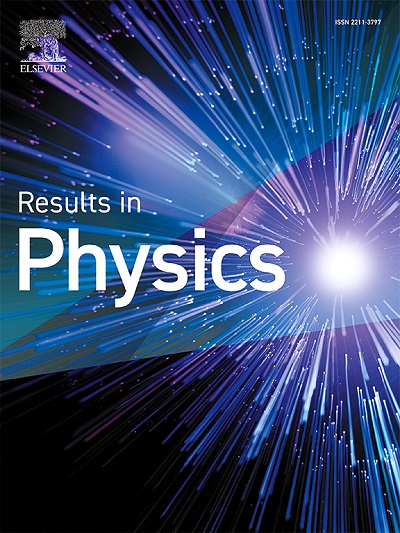Coefficient of thermal expansion of Nd-Fe-B magnetic particle polymer composites – experiments and stochastic finite element modeling
IF 4.4
2区 物理与天体物理
Q2 MATERIALS SCIENCE, MULTIDISCIPLINARY
引用次数: 0
Abstract
Polymer composites containing magnetic fillers show great potential for various applications, including energy storage and medical devices. To aid in the engineering and design of these components, a thorough understanding of the thermal behavior of these inhomogeneous and often highly anisotropic materials is essential, particularly in terms of their coefficient of thermal expansion (CTE). To explore this, the authors produced magnetic composites using compression molding and casting techniques. The epoxy polymer matrix was modified with a commercial thickening agent, and isotropic magnetic particles were added as functional fillers. The microstructural morphology of the composites, including the distribution, dispersion, and alignment of the magnetic fillers, was analyzed through microscopy techniques like scanning electron microscopy. Furthermore, the glass transition temperature of both the polymer matrix and the composites was measured using differential scanning calorimetry (DSC). The CTEs of both the polymer matrix and the composites were experimentally determined using a custom-designed setup and analyzed through stochastic finite element analysis (SFEA). Five modeling scenarios were considered to predict the CTEs of the composite systems: fully random distribution, randomly aligned distribution, a ‘bonded’ interface contact, and a ‘no-separation’ interface contact for the in-plane directions of particles. For the out-of-plane direction, the randomly aligned distribution with ‘no-separation’ contact was also explored. Among the in-plane direction scenarios, the case with ‘bonded’ interface contact and randomly aligned distribution yielded the lowest CTE, while the case with fully random distribution and ‘no-separation’ interface contact resulted in the highest CTE. Finally, the experimental and SFEA modeling results were compared and discussed.
Nd-Fe-B磁性颗粒聚合物复合材料的热膨胀系数-实验与随机有限元模拟
含有磁性填充物的聚合物复合材料显示出巨大的应用潜力,包括能源储存和医疗设备。为了帮助这些部件的工程和设计,深入了解这些非均匀且通常高度各向异性的材料的热行为是必不可少的,特别是在热膨胀系数(CTE)方面。为了探索这一点,作者使用压缩成型和铸造技术生产了磁性复合材料。用工业增稠剂对环氧聚合物基体进行改性,并添加各向同性磁性颗粒作为功能填料。通过扫描电镜等显微技术分析了复合材料的微观结构形态,包括磁性填料的分布、分散和排列。此外,采用差示扫描量热法(DSC)测量了聚合物基体和复合材料的玻璃化转变温度。采用定制的实验装置对聚合物基体和复合材料的cte进行了实验测定,并通过随机有限元分析(SFEA)进行了分析。考虑了五种模拟情景来预测复合体系的cte:完全随机分布、随机排列分布、“键合”界面接触和颗粒面内“无分离”界面接触。对于面外方向,还探索了“无分离”接触的随机排列分布。在平面方向上,“键合”界面接触和随机排列情况下的CTE最低,而完全随机分布和“无分离”界面接触情况下的CTE最高。最后,对实验结果和有限元模拟结果进行了比较和讨论。
本文章由计算机程序翻译,如有差异,请以英文原文为准。
求助全文
约1分钟内获得全文
求助全文
来源期刊

Results in Physics
MATERIALS SCIENCE, MULTIDISCIPLINARYPHYSIC-PHYSICS, MULTIDISCIPLINARY
CiteScore
8.70
自引率
9.40%
发文量
754
审稿时长
50 days
期刊介绍:
Results in Physics is an open access journal offering authors the opportunity to publish in all fundamental and interdisciplinary areas of physics, materials science, and applied physics. Papers of a theoretical, computational, and experimental nature are all welcome. Results in Physics accepts papers that are scientifically sound, technically correct and provide valuable new knowledge to the physics community. Topics such as three-dimensional flow and magnetohydrodynamics are not within the scope of Results in Physics.
Results in Physics welcomes three types of papers:
1. Full research papers
2. Microarticles: very short papers, no longer than two pages. They may consist of a single, but well-described piece of information, such as:
- Data and/or a plot plus a description
- Description of a new method or instrumentation
- Negative results
- Concept or design study
3. Letters to the Editor: Letters discussing a recent article published in Results in Physics are welcome. These are objective, constructive, or educational critiques of papers published in Results in Physics. Accepted letters will be sent to the author of the original paper for a response. Each letter and response is published together. Letters should be received within 8 weeks of the article''s publication. They should not exceed 750 words of text and 10 references.
 求助内容:
求助内容: 应助结果提醒方式:
应助结果提醒方式:


